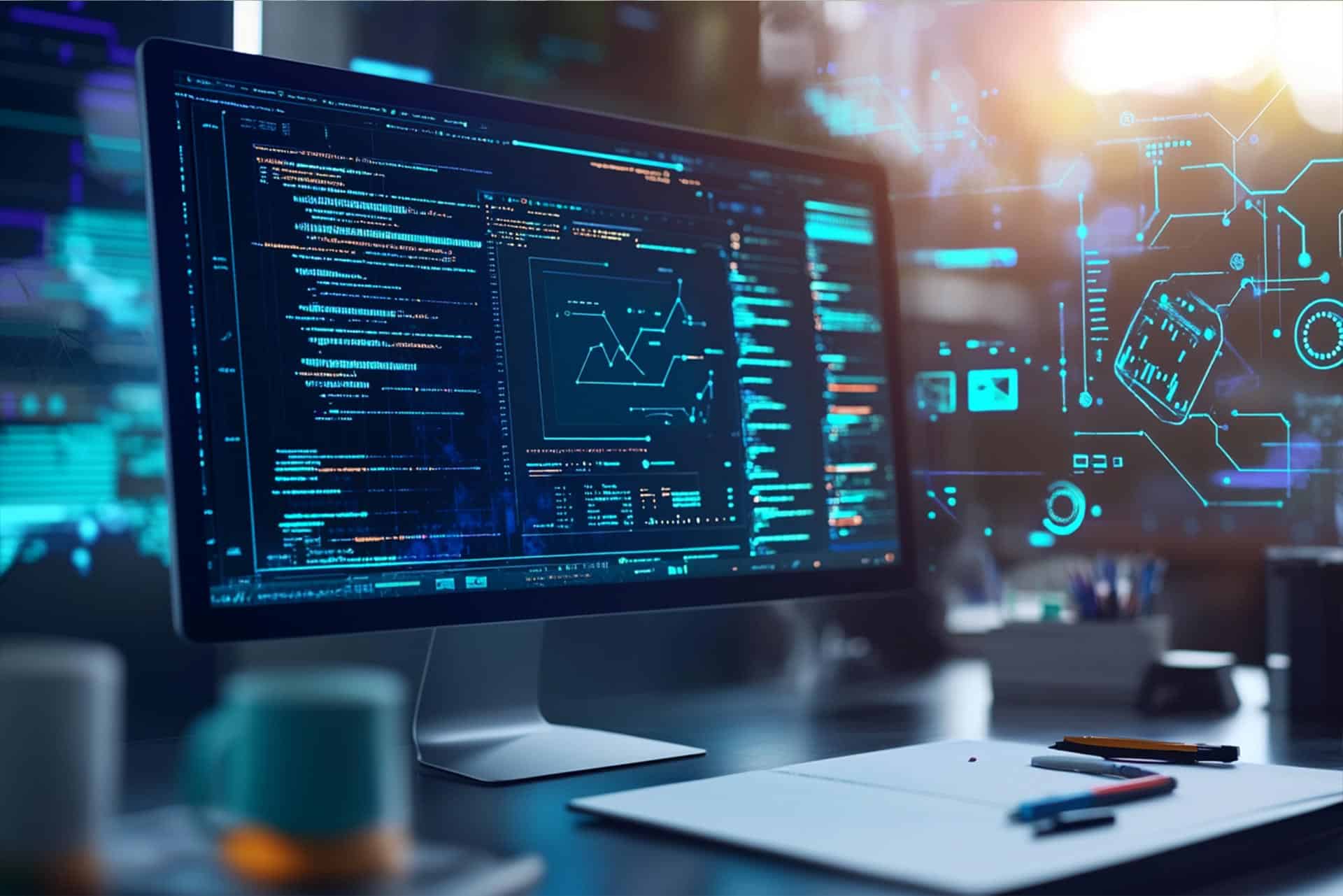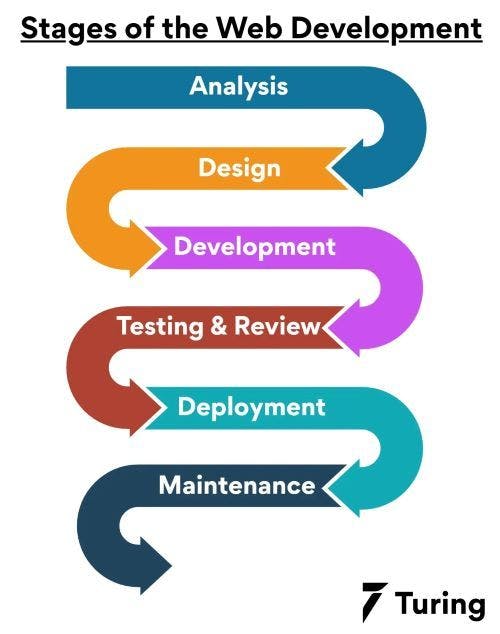Checking Out the Various Sorts Of Web Design and Their Special Benefits
The landscape of website design encompasses a variety of designs, each offering unique advantages that satisfy various customer demands. Minimalist and flat layouts emphasize quality, while responsive and material styles boost convenience across tools. Illustratory and typography-driven techniques aim to increase interaction and emotional vibration. Understanding these diverse kinds can considerably affect customer experience and brand name assumption. What exists below the surface area of these style options?
Minimal Website Design

Minimalist Web design often includes a minimal color combination and straightforward typography, which not only improves aesthetics however additionally strengthens brand identification. The reduced complexity can result in much faster packing times, even more improving user complete satisfaction. In addition, by reducing visual mess, individuals can engage with content extra properly, resulting in boosted comprehension and retention. On the whole, minimalist Web style fosters a seamless individual experience, making it a prominent option for brands intending to communicate quality and professionalism in their online visibility.
Receptive Web Design
Responsive Web design has ended up being important in today's electronic landscape, making sure mobile compatibility for individuals across numerous tools. This method considerably improves user experience by supplying seamless navigation and accessibility, no matter of screen size. As even more people access the Web on tablets and smartphones, the value of receptive layout proceeds to expand.

Mobile Compatibility Importance
As mobile device usage remains to rise, guaranteeing internet sites are compatible with various display sizes has actually come to be vital for effective communication and interaction. Mobile compatibility, typically accomplished with responsive website design, permits internet sites to adjust flawlessly to smartphones, tablets, and other devices. This adaptability not only gets to a more comprehensive audience yet likewise enhances brand credibility. A web site that works well on mobile tools mirrors professionalism and trust and interest to customer demands. Additionally, internet search engine focus on mobile-friendly websites in their positions, making compatibility an important aspect for online presence. By buying mobile compatibility, businesses can boost their electronic presence and accommodate the growing variety of customers who access details on the move. Prioritizing mobile-responsive design is essential in today's electronic landscape.
Improved User Experience
:max_bytes(150000):strip_icc()/GettyImages-502089743-56d780b93df78cfb37dbddf7-3ae7e3dd46b241678f5096f0101be925.jpg)
Flat Layout
Flat style is a minimal technique to Web design that emphasizes simpleness and clarity. By removing three-dimensional elements such as shadows, slopes, and textures, flat style produces a visually enticing interface that prioritizes material and functionality. This design promotes an instinctive navigation experience, as customers can swiftly determine vital attributes and actions without interruption.
Among the primary benefits of flat layout is its responsiveness across various tools and screen sizes. Its tidy lines and uncomplicated formats adapt perfectly, making certain a constant experience for customers on mobile, tablet, or desktop platforms. In addition, flat design frequently incorporates vibrant shades and typography, boosting visual effect and brand acknowledgment.
In addition, the simplicity integral in flat style results in much faster packing times, which contributes favorably to user satisfaction - website design. Generally, level design remains a prominent option for modern Web growth, aligning with modern aesthetic preferences while delivering excellent use
Material Design
Material Design represents a style language established by Google that concentrates on producing a cohesive and user-friendly customer experience throughout digital platforms. This method stresses making use of grid-based formats, responsive animations, and deepness effects such as lighting and darkness, which assist to create a feeling of hierarchy and spatial relationships. By mimicking the physical world, Material Design allows users to communicate with digital user interfaces in a much more engaging and all-natural way.
Among the essential benefits of Product Style is its flexibility across various tools and screen dimensions, making certain a consistent experience for customers. Furthermore, it advertises a clear visual language that boosts functionality, making it much easier for users to browse intricate applications. The consolidation of vibrant colors and bold typography also plays a vital duty in attracting attention to crucial elements, consequently improving general user engagement - web development. As A Result, Material Layout has become a prominent selection among designers looking for to create functional and visually attractive sites
Typography-Driven Design
Typography-Driven Design concentrates on the tactical use type to boost the aesthetic and useful facets of a web site. This style strategy focuses on typefaces, font dimensions, spacing, and hierarchy to develop visual rate of interest and overview customer experience. By carefully choosing typography, designers can communicate brand name identity and evoke emotions, making the web content extra easily accessible and appealing.
Reliable typography boosts readability and functionality, making sure that individuals can quickly navigate the website and take in details. The right combination of kind can also develop a clear aesthetic power structure, enabling users to swiftly identify vital messages and calls to action.
A typography-driven method can be adjusted to different devices, ensuring consistency throughout systems. This adaptability is necessary in today's multi-device landscape, where individual experience is critical. Inevitably, Typography-Driven Layout serves not just as a creative choice but additionally as a useful element that considerably affects a website's performance.
Illustratory Web Style
Illustratory Web style employs aesthetic storytelling methods that can substantially boost user interaction. By integrating distinct illustrations, sites can create a remarkable brand identity that resonates with their audience. This method not just mesmerizes visitors yet also interacts messages in an aesthetically compelling way.
Aesthetic Storytelling Techniques
A wide variety of next Web developers employ visual narration methods to produce appealing and immersive customer experiences. This method integrates images, format, and typography to tell a story that resonates with individuals on a psychological degree. By incorporating engaging visuals, developers can properly share messages and stimulate sensations, assisting visitors through a brand name's trip. Infographics, animations, and interactive elements offer to boost stories, making intricate details a lot more available and memorable. Additionally, aesthetic storytelling can develop a cohesive brand identity, as consistent images and motifs strengthen core worths and messages. Eventually, this technique not just mesmerizes users but additionally promotes a much deeper link with the content, urging exploration and retention. Via skilled application, aesthetic storytelling changes standard Web experiences into dynamic and purposeful communications.
Enhancing Individual Interaction
Efficient website design considerably enhances customer involvement by leveraging illustrative aspects that attract attention and foster communication. Pictures can simplify complicated concepts, making them much more unforgettable and friendly for users. They damage the monotony of text-heavy web pages, creating visual breaks that invite expedition. Additionally, special illustrations can evoke emotions, encouraging individuals to attach with the content on a deeper degree. Interactive elements, such as computer animations or hover results, can also boost engagement by inviting individuals to participate actively rather than passively taking in info. This technique not just keeps site visitors on the website longer however likewise increases the probability of return gos to. Inevitably, effective illustrative website design changes the user experience, making it more enjoyable and impactful.
Branding Via Image
Aesthetic aspects play a considerable function fit a brand name's identity, and illustrations are an effective device hereof. Illustratory website design allows brand names to share their unique individuality and values with custom-made art work. This strategy promotes a much deeper psychological link with the audience, enhancing memorability and engagement. By incorporating pictures, brand names can distinguish themselves in a congested marketplace, creating a distinct visual story that resonates with their target demographic. Furthermore, images can make and simplify complex ideas web content extra obtainable, successfully interacting messages in an engaging way. In general, branding via image not just improves the customer experience yet likewise strengthens brand name recognition, making it a useful method for businesses aiming to develop a solid on-line visibility.
Frequently Asked Concerns
How Do I Pick the Right Web Style Type for My Business?
To select the best Web website link layout kind for an organization, one need to examine objectives, target market, and industry standards. Assessing individual experience and capability will certainly assist the choice process for excellent engagement and effectiveness.
What Devices Are Ideal for Producing Different Web Design Designs?
Popular devices for creating diverse Web design styles include Adobe XD, Figma, Lay Out, and WordPress. Each deals distinct functions tailored to different design demands, making it possible for designers to construct practical and visually appealing internet sites effectively.
How Much Does Professional Website Design Typically Cost?
Specialist Web design usually costs between $2,000 and $10,000, relying on intricacy, attributes, and developer competence. Custom-made services and continuous maintenance might enhance expenditures, while themes can offer more economical options for less complex projects.
Can I Integrate Multiple Web Style Types Successfully?
Yes, incorporating multiple website design types can be reliable. By integrating elements from different designs, developers can produce one-of-a-kind, interesting user experiences that deal with varied target markets while improving functionality and visual allure.
Exactly How Do Layout Trends Effect Individual Experience and Involvement?
Design fads greatly influence customer experience and interaction by boosting visual allure, improving navigation, and fostering emotional links - website development. Staying updated with patterns allows designers to create intuitive interfaces that resonate with users and urge long term interactions
Minimalist and level designs stress quality, while receptive read this post here and worldly layouts enhance flexibility across tools. It might appear counterproductive, minimalist Web layout stresses simplicity to enhance individual experience. Receptive Web design plays a vital function in improving individual experience by making sure that an internet site adjusts effortlessly to numerous screen sizes and tools. Flat design is a minimalist strategy to Web layout that emphasizes simplicity and clarity. Product Style stands for a design language developed by Google that focuses on producing a natural and user-friendly user experience across electronic systems.